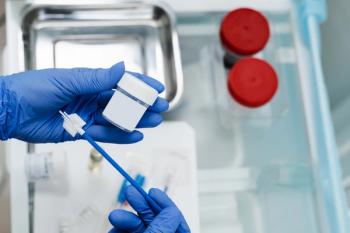
Eating Weird Objects? You May Have Pica
The other day I began watching television and a show was on that you may all be familiar with called “My Strange Addiction.
Since attending pharmacy school my ways of thinking have changed. It makes your brain start turning when doing the daily tasks such as going to the gym causes you to think about all the endorphins that are being released, in turn making you realize everything that is currently going on in your body. The other day I began watching television and a show was on that you may all be familiar with called “My Strange Addiction."
This show follows people with strange addictions, many of the addictions involving people consuming materials such as used baby diapers and couch cushions. A person with no medical background may think nothing of these behaviors and that these people must be just weird and gross but with the knowledge I gained throughout schooling I began to wonder if maybe something else was going on. What if these individuals had a disorder called pica and were just undiagnosed? I’m sure this wasn’t the case with all the individuals on the show but it could have been a possibility for some.
What Exactly Is Pica?
Pica is an eating disorder that involves eating non-food items that contain absolutely no nutritional value and are typically not thought of as food. The substances vary with both age and availability and can include a wide range of substances being ingested, including hair, clothing, soap, clay, paint, paper, and other various substances. Pica can affect individuals of both genders and is not age specific. To be diagnosed with this condition, the behavior must continue for at least one month.
What Causes Pica?
The etiology of this condition remains unclear although there have been several conditions that are thought to have a correlation with pica. Pica is seen in many individuals suffering from iron deficiency anemia which is a condition that occurs when iron and red blood cell levels are low. Pica has also been observed in pregnancy, as some women begin to crave eating non-food items although the occurrence of why it happens within the pregnant population is unknown. Lastly, pica has been linked to various mental health conditions such as schizophrenia, autism, and in people with severe developmental disabilities.
What Are The Complications Associated With Pica?
Although some of the objects people tend to consume are harmless, others may place them at risk for serious complications that may even require medical intervention. If the patient is ingesting a toxic substance it places them at high risk for poisoning with lead and mercury poisoning most commonly being seen. This condition also renders patients susceptible to parasitic infections, dental issues, intestinal obstruction, choking, both electrolyte and metabolic disorders, and various problems in the gastrointestinal tract.
What Is The Treatment For Pica?
To treat the condition patients must be open and honest to their providers about all of the objects they have ingested. Pica sometimes remains undiagnosed due to the fear of judgment from others around them. The doctor/pharmacist will begin the treating process by looking at lab values to see if the individual has any deficiencies. If so, these deficiencies will need to be corrected. If the patient has acquired any complications from the disorder for example if they were ingesting something toxic, the doctor may begin the patient on chelation therapy. A psychological evaluation may also be recommended in order to rule out any underlying causes of the condition. Depending on the outcome of the psychological evaluation, additional treatment may or may not be implemented.
References
American Psychiatric Association: Diagnostic and Statistical Manual of Mental Disorders, Fifth Edition. Arlington, VA, American Psychiatric Association, 2013.
Kar SK, Kamboj A., & Kumar, R. (2015, January — March). Pica and psychosis: Clinical attributes and correlations: A case report. Journal of Family Medicine and Primary Care, 4(1), 149-150. Retrieved from
Kettaneh A, Eclache V, Fain O, et al. Pica and food craving in patients with iron deficiency anemia: a case-control study in France. Am J Med. 2005;118(2):185—188. doi: 10.1016/j.amjmed.2004.07.050.
Pica and rumination behavior among individuals seeking treatment for eating disorders or obesity. Delaney CB, Eddy KT, Hartmann AS, Becker AE, Murray HB, Thomas JJ. Int J Eat Disord. 2015 Mar;48(2):238-48.
Newsletter
Stay informed on drug updates, treatment guidelines, and pharmacy practice trends—subscribe to Pharmacy Times for weekly clinical insights.




















































































































































































































